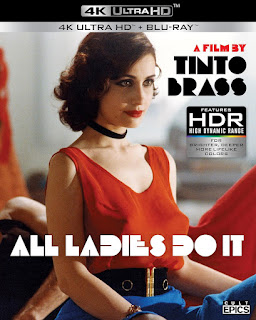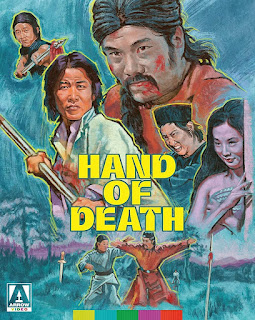The House that Screamed
If you watch enough movies, you can tell within the first five minutes if you’re in the hands of someone who really knows what they’re doing. There’s a personality behind the camera, storytelling with visual intention rather than just coverage. Hitchcock is the most obvious example but he didn’t have a copyright on the technique. Spanish writer/director Narciso Ibanez Serrador, after the success of his Twilight Zone-inspired TV series Tales to Keep you Awake, moved to the big screen for 1969’s La Residencia, a gothic-giallo combo that pulls out all the stops, echoing the sexually-repressed films of Luis Bunel and predating the Italian wave of sexy thrillers.
As the new student in a tough-as-nails boarding school, Teresa (Cristina Galbo) has her work cut out just trying to survive the everyday cut throat female politics. But there’s also a killer on the loose, luring away troubled girls and covering up their disappearances as escape attempts. The headmistress, Senora Fourneau (Lilli Palmer) is caught up in her own personal drama, taking out her repressed urges with violent punishments and keeping her teenage son under lock and key. Turning young women into ladies becomes secondary to teaching them to survive!
La Residencia is masterful filmmaking on nearly every level. Genre fans will note the similarities to certain Hammer Film formulas and Argento’s Suspiria right away, but Serrador got there first and delivers much more than extravagant lighting and murder sequences. His film is so full of sexual tension there’s a near-constant flush of angst and anticipation. This is horror for adults, for those who appreciate emotional conflict and much as the physical sort. And it’s every bit as effective at both.
Packed with religious subtext and overt expressions of repressed sexuality, the film is a literal powder keg attached to an hour and 45-minute cinematic fuse. All the gothic trimmings are in place, but Serrador modernizes his approach with clever editing, freeze frames and music cues that are as innovative as anything produced by the Hollywood New Wave of the ‘70s. The murders are impactful rather than exploitive and still provide a shock. A few narrative stumbles set the stage for an unexpected protagonist switch that is truly unexpected. Even the theatrical version released by AIP as The House that Screamed, trimmed by nearly 15 minutes, is genre filmmaking that rises well above the bar.
With a brand new 2K restoration, Arrow Films release looks considerably better than the previous Scream Factory release, which used SD inserts to create the extended cut. It’s seamless this time around with a new audio commentary, new interviews, alternate footage, fold-out poster and collector’s booklet included as extras.




Comments
Post a Comment